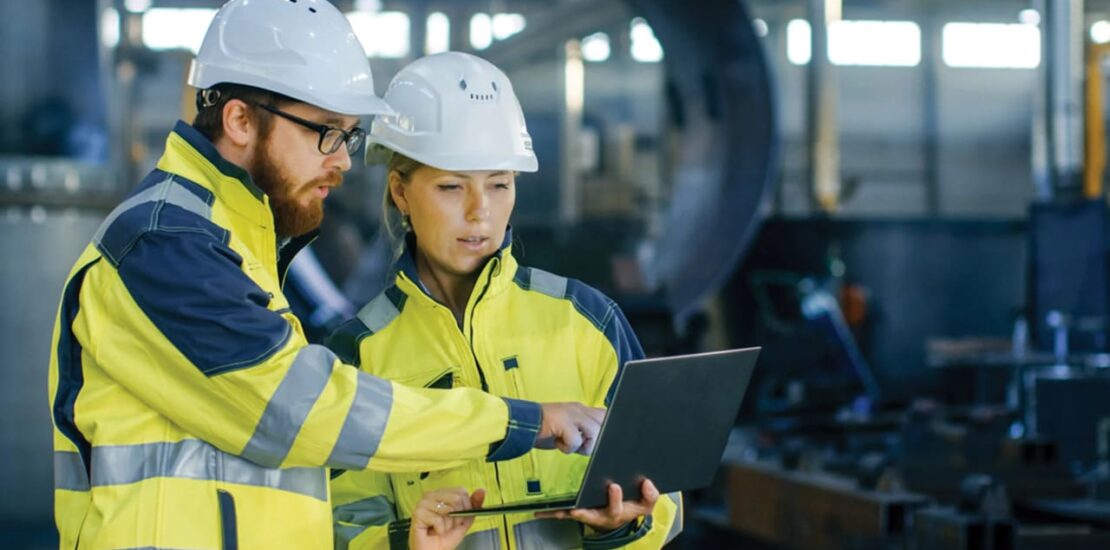Personal Protective Equipment (PPE) Detection: A Comprehensive Guide to Safety
- April 21, 2025
- Posted by:
- Category: Articles

Business people talk numbers, so there’s no need to discuss the importance of personal protective equipment detection systems before presenting this statistic: 12%-14% of occupational injuries resulting in total disability occur because employees are not wearing the proper PPE (OSHA). PPE detection is a technology made to prevent injuries and save millions of dollars.
What is Personal Protective Equipment?
Commonly referred to as “PPE”, is equipment worn to maintain safety and reduce workplace hazards and injuries that may cause serious injury and disability. This PPE equipment includes hard helmets, safety goggles, gloves and boots, earplugs and ear protectors, and even full body suits and face masks (post-COVID lesson learned).
The PPE market is expected to grow to USD 104.3 billion by 2027, further increasing to USD 110.4 billion in 2028 (Market.us, 2025).
What is a Personal Protective Equipment detection system?
The Occupational Safety and Health Administration (OSHA) and the World Health Organization (WHO) obligate training on the use and maintenance of PPE. However, this isn’t enough. To ensure that PPE is worn and used correctly and effectively, companies/organizations/industries need to keep a close eye on the safety of workers and employees using the PPE detection systems. These systems control access to premises based on whether safety equipment is worn or not; they report injuries and predict problems before they even happen.
| Statistics: The PPE detection sector is expected to grow from USD 82.87 billion in 2025 to USD 156.51 billion by 2034. (Market Research Future, 2025) |
Why Does Enhancing Workplace Safety Matter?
Workplace safety is about real people—workers and employees. Thousands of workers are injured each year, and besides the human cost (which is the main point, of course), there is a business aspect to it as well. Why?
- Accidents mean downtime (the total cost of workplace injuries in 2022 was $167 billion).
- Work injuries cause lost time (Days lost due to injuries in 2022 totaled 75,000,000).
- This results in lawsuits and medical expenses.
Statistics
| The total cost of workplace injuries in 2022 was $167 billion. This figure includes $50.7 billion in lost wages and productivity, $37.6 billion in medical expenses, and $54.4 billion in administrative expenses. (NSC, 2022) |
What to Consider When Selecting Safety Equipment Suppliers?
Here’s a checklist of things to consider when selecting safety equipment suppliers:
Reputation First
Google ratings and social media reviews leave no room for doubt (if you search the right places). When selecting personal protective equipment suppliers, companies need to choose those with a proven track record.
Product Range
A supplier with a wide range of personal protective equipment (PPE) is better. The more reliable the source, the better to ensure consistent quality. Verifying availability and delivery times are also essential.
Quality Certifications
This is safety equipment, so don’t compromise on quality—certifications (trusted) make a difference. Companies shouldn’t hesitate to ask for quality certifications.
Cost Is Important
Price is always a factor. But don’t fall for offers that seem too good to be true. Cheap PPE Safety Equipment may save you money upfront, but it can be costly if it breaks down when you need it.
Pre-sales and Post-sales
- Pre-sales: The supplier should be able to answer questions about what personal protective equipment is appropriate for the customer based on the industry.
- Post-sales: They should support their products by providing clear warranties, return policies, and strong customer service.
Personal Protective Equipment Main Checklist
Personal protective equipment (PPE) is here to save the day. Check out the PPE main checklist:
| PPE Category | Purpose | Examples | Sources |
| Respiratory Protection | Protects against inhalation of hazardous substances. | Respirators, masks. | Healthy Working Lives
OSHA |
| Eye Protection | Shields eyes from debris, chemicals, or radiation. | Safety glasses, goggles, and face shields. | |
| Hearing Protection | Reduces exposure to harmful noise levels. | Earplugs, earmuffs. | |
| Head Protection | Guards against head injuries from impacts or falling objects. | Hard hats, bump caps. | |
| Hand Protection | Protects hands from cuts, burns, chemicals, or infections. | Gloves (e.g., rubber, cut-resistant, heat-resistant). | |
| Foot Protection | Shields feet from crushing, punctures, or hazardous substances. | Steel-toe boots, safety shoes. | |
| Skin and Body Protection | Protects skin and body from chemical exposure, extreme temperatures, or infections. | Lab coats, coveralls, aprons, full-body suits. | |
| Fall Protection | Prevents injuries from falls at height. | Safety harnesses, lanyards, and lifelines. |
Also you can learn more about: Bank Security Cameras
6 Comments
Comments are closed.

[…] Also you can more about: A Comprehensive Guide to Personal Protective Equipment […]
[…] Personal Protective Equipment (PPE) detection. […]
[…] use of personal protective equipment (PPE) is mandatory in many countries. In the European Union, Regulation (EU) 2016/425 applies. In […]
[…] Personal Protective Equipment (PPE) acts as a first line defense against occupational hazards, shielding workers from injuries caused by debris, chemicals, or heavy machinery. However, its effectiveness hinges on proper selection, quality, and usage. According to OSHA, 12–14% of workplace injuries resulting in total disability occur due to improper PPE use—underscoring the life-or-death stakes of selecting reliable suppliers. And here’s the answer for the earlier question: […]
[…] personal protective equipment (PPE) is a common way to maintain safety and minimize workplace risks and injuries that could […]
[…] protective equipment (PPE Detection) is a personal suit of armor against the dangers lurking in the work environment- it’s about […]